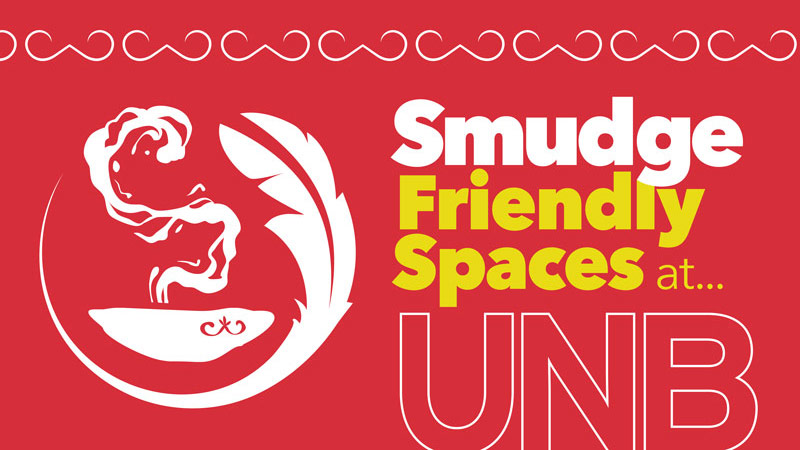New policy makes Indigenous smudging and pipe ceremonies more accessible on campus
Author: Alex Graham
Posted on Jun 28, 2024
Category: UNB Saint John , UNB Fredericton

Indigenous students and staff at the University of New Brunswick (UNB) now have more opportunities for holding smudging and pipe ceremonies on campus.
In May, UNB adopted a policy to create designated areas for smudging and pipe ceremonies. Previously, special permission from security was needed to perform this cultural practice.
“When we smudge, it feeds the mind, body, and spirit,” explained Elder Jeannie Bartibogue, a Mi’kmaq Elder, and the Kcicihtuwinut (Knowledge Carrier-in-Residence) at UNB’s Mi’kmaq-Wolastoqey Centre (MWC). “It takes away all the negative.”
Elder Jeannie is a cultural and spiritual leader in Wabanaki teachings. She explained that smudging is a tradition that clears the air of any unfavourable energy, replacing it with a more balanced, harmonious atmosphere. The act of smudging, as well as the pipe ceremony for which the rooms have also been designated, helps participants and observers move forward in that space, and beyond, with a sense of accord and peace.
Elder Jeannie said that practices like smudging and the pipe ceremony play an important role in showing respect to others.
“I've been asked to do a pipe ceremony honouring Indigenous veterans,” she explained.
“Lighting that pipe is building a relationship to those ancestors and [recognizing] how much they have fought for the people. It is also to remember the struggles they have gone through.”
She said being able to have the pipe ceremony on campus was an honour for her and for the MWC, as the ability to hold such ceremonies on campus at that time was rare. This new policy is creating more opportunities to engage in this important practice.
Designated working classrooms can be used for the ceremonies. A sliding sign outside the room should be used to indicate that a smudging is in progress.
Elder Jeannie reflected on how attitudes toward traditional Indigenous practices have changed in recent decades, and how this shift has brought pride back to Indigenous people.
“We never used to be able to smudge, let alone carry out any ceremony or practice. It was always closed off for us,” she said. “It’s only in the past 50 some years that we’ve been allowed to practice our ceremonies again. So, we want to instill that in our students and in our young people.”
“We want to open up a dialogue,” Jeannie said.
For more information about this initiative and to learn how to use a smudge-friendly room, see Smudging.
